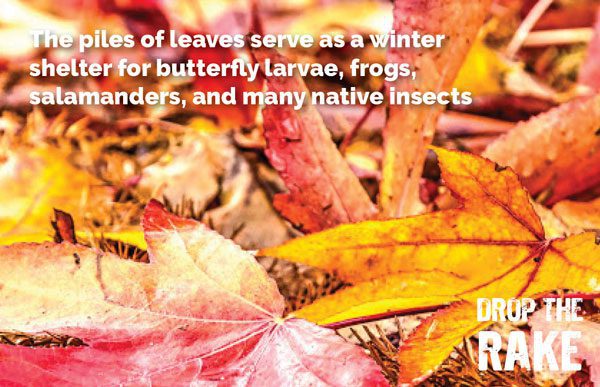It’s the time of year when many homeowners have closed their gardens up for another year and are preparing their properties for the winter ahead. And while raking leaves might be good exercise, is it really necessary?
Your heart and inner ‘type A’ personality might say ‘yes’, but some environmental groups are saying ‘no’. The fact remains that often, the leaves we rake end up in bags for curbside collection, and many of them go straight to the dump.
The Environmental Protection Agency (EPA) estimates that leaves, grass clippings, and other yard debris account for 34.7 million tons of waste per year in the US.
It’s no secret what happens when green and brown waste begins to decompose in garbage dumps. Methane gas is released, a harmful pollutant that affects the air we breathe, the soil, and water.
In a Global News report, the Nature Conservancy of Canada is encouraging homeowners to keep their rakes in the shed for the sake of the environment.
The non-profit says fallen leaves support biodiversity in the yard. For example, the piles serve as a winter shelter for butterfly larvae, frogs, salamanders, and many native insects.

Of course, there’s the concern that a bed of soggy leaves will kill the grass over the winter. Practical Organic Gardening: The No-Nonsense Guide to Growing Naturally agrees that it’s a one-way ticket to fungal problems.
Author Mark Highland recommends mowing or mulching the leaves, so they remain on the lawn but in much smaller pieces. Piles of leaves can also be raked up around tree trunks and flower beds.
If your neat-freak tendencies just won’t allow the leaves to remain on the lawn, rake them into a pile beside your compost bin for easy layering throughout the winter and well into next spring and summer!
So, don’t view fallen leaves as a chore; look at them as essential to the organic garden.